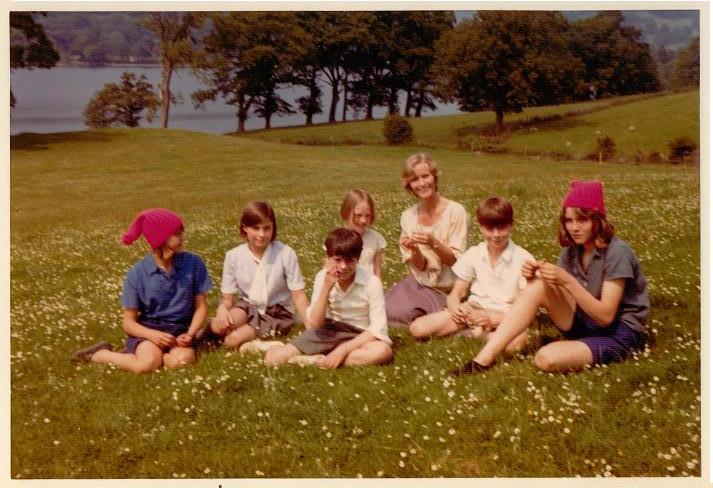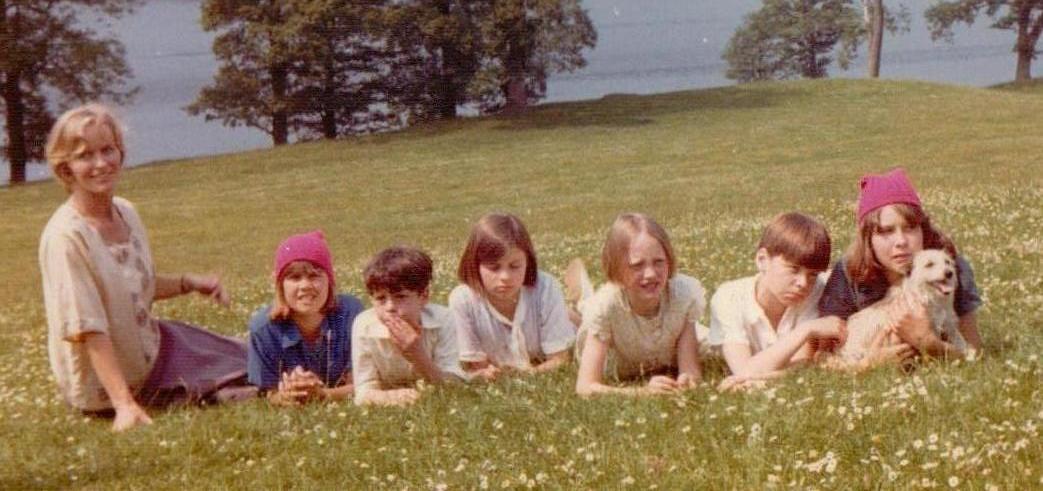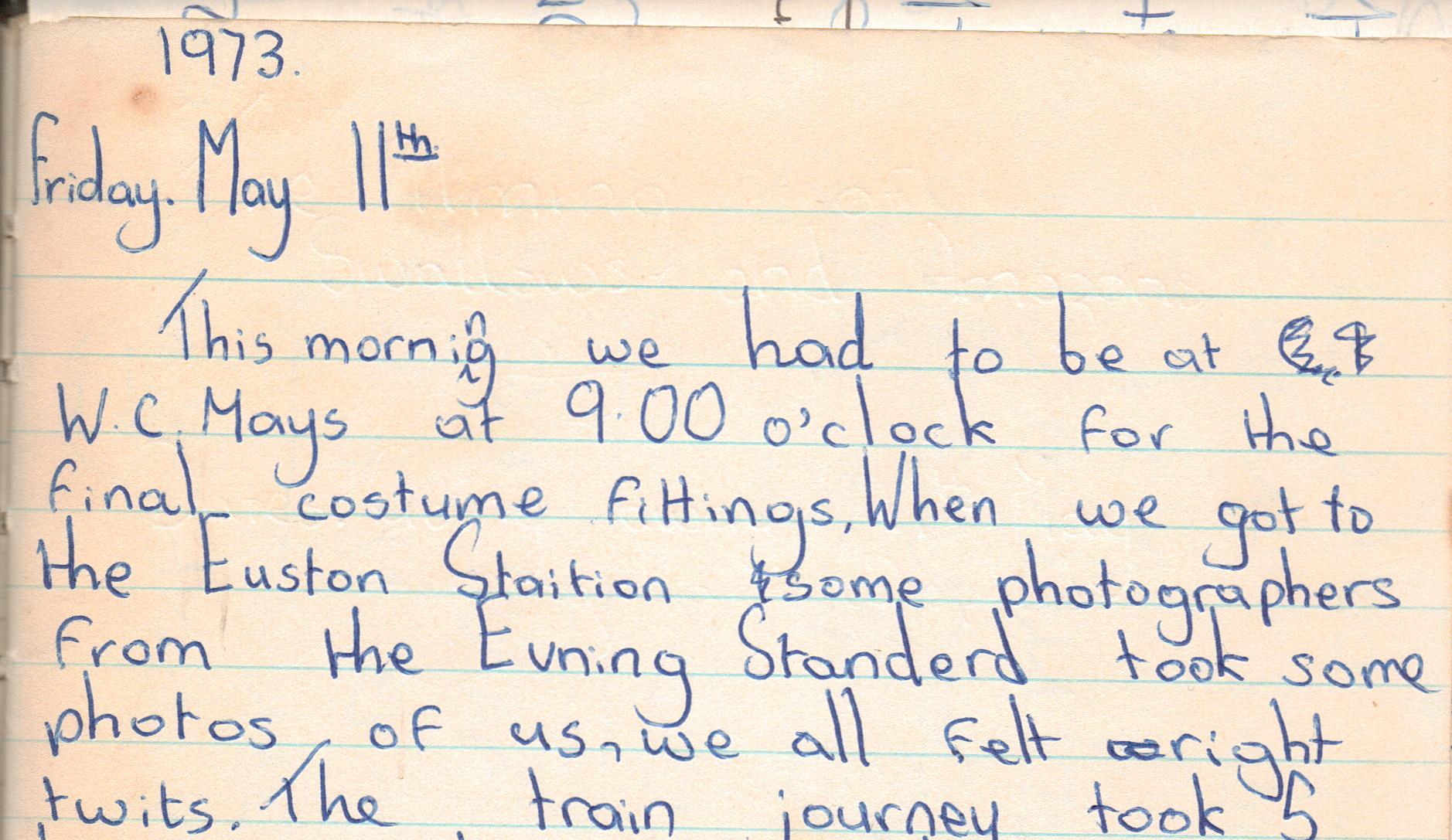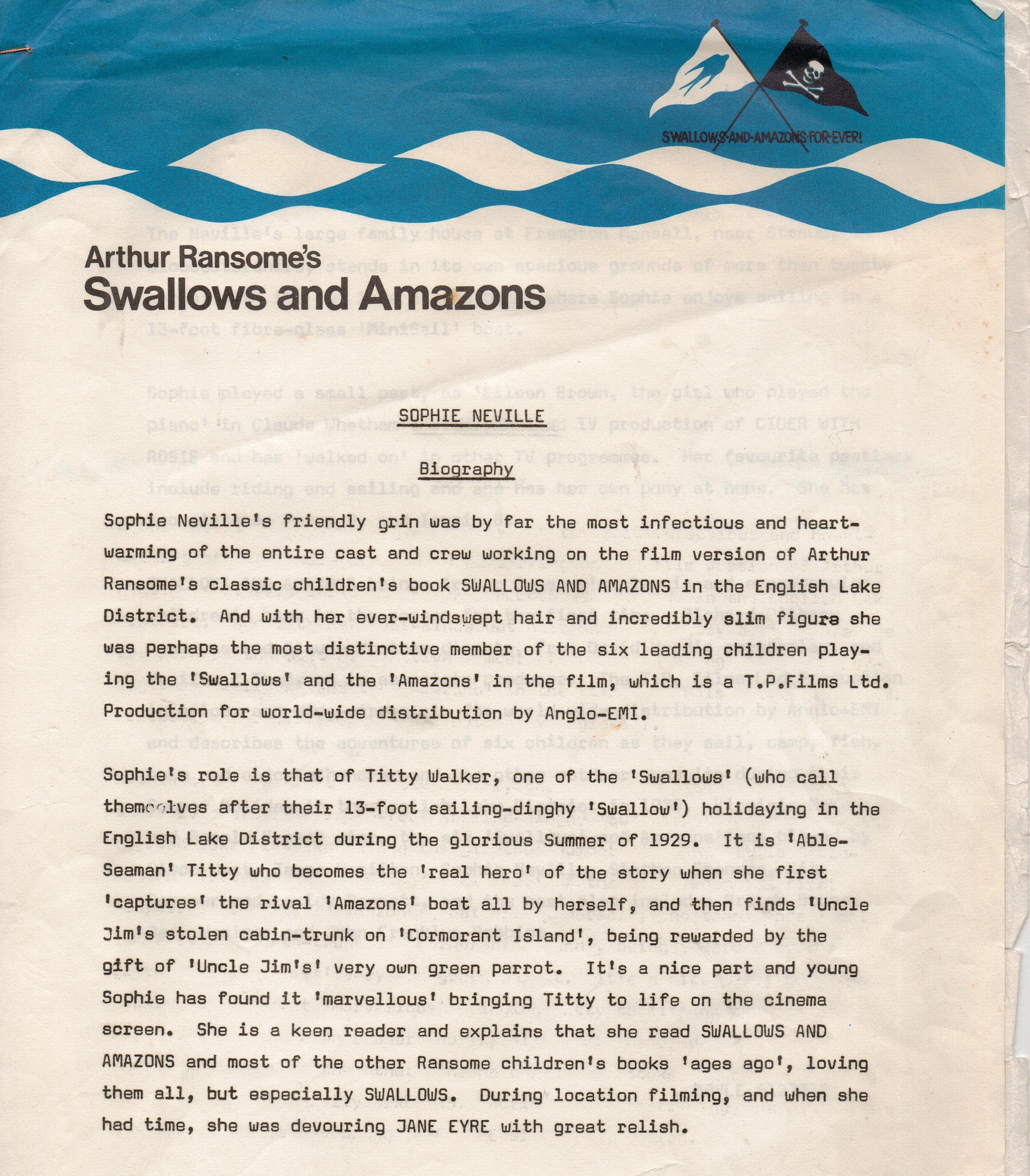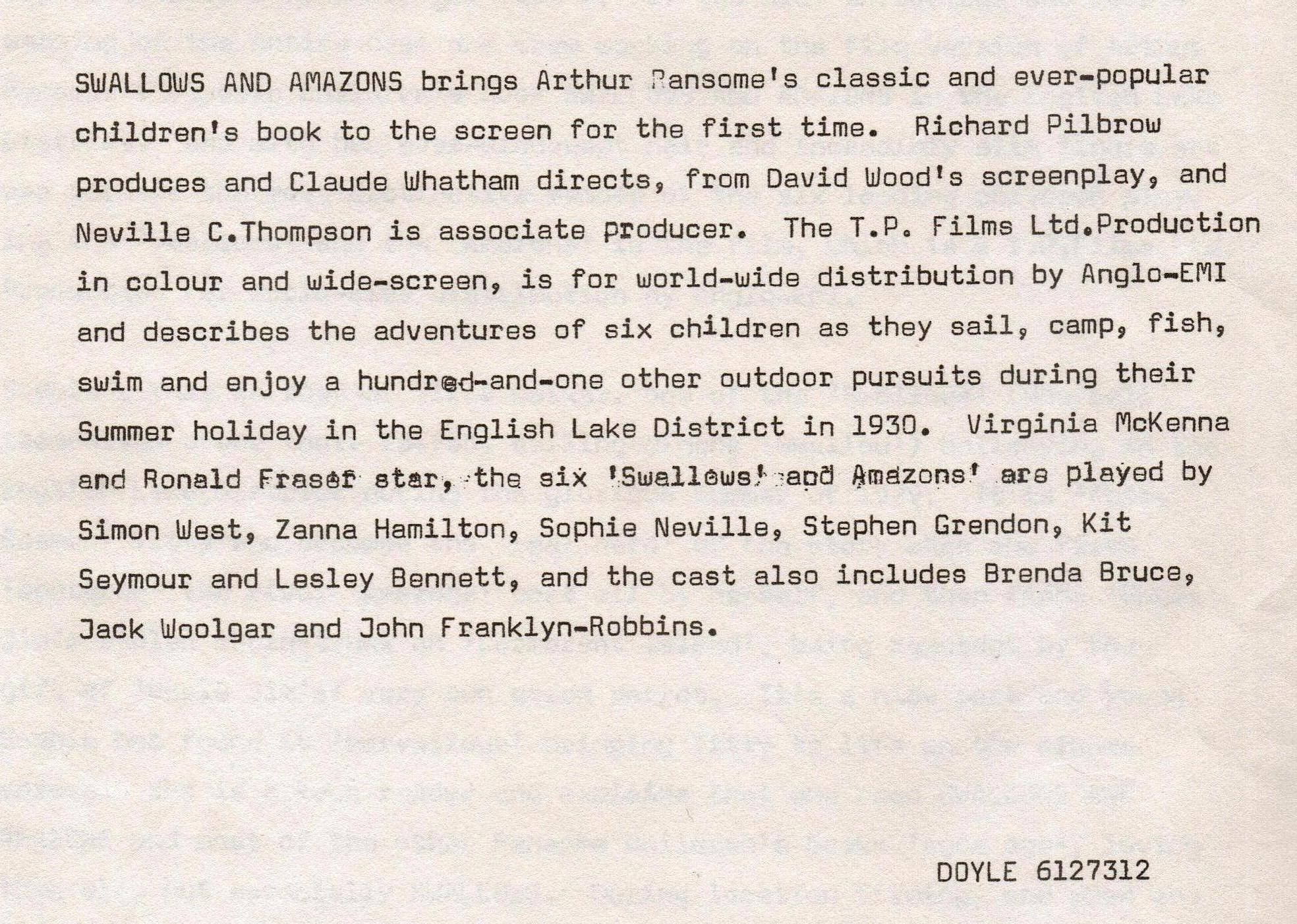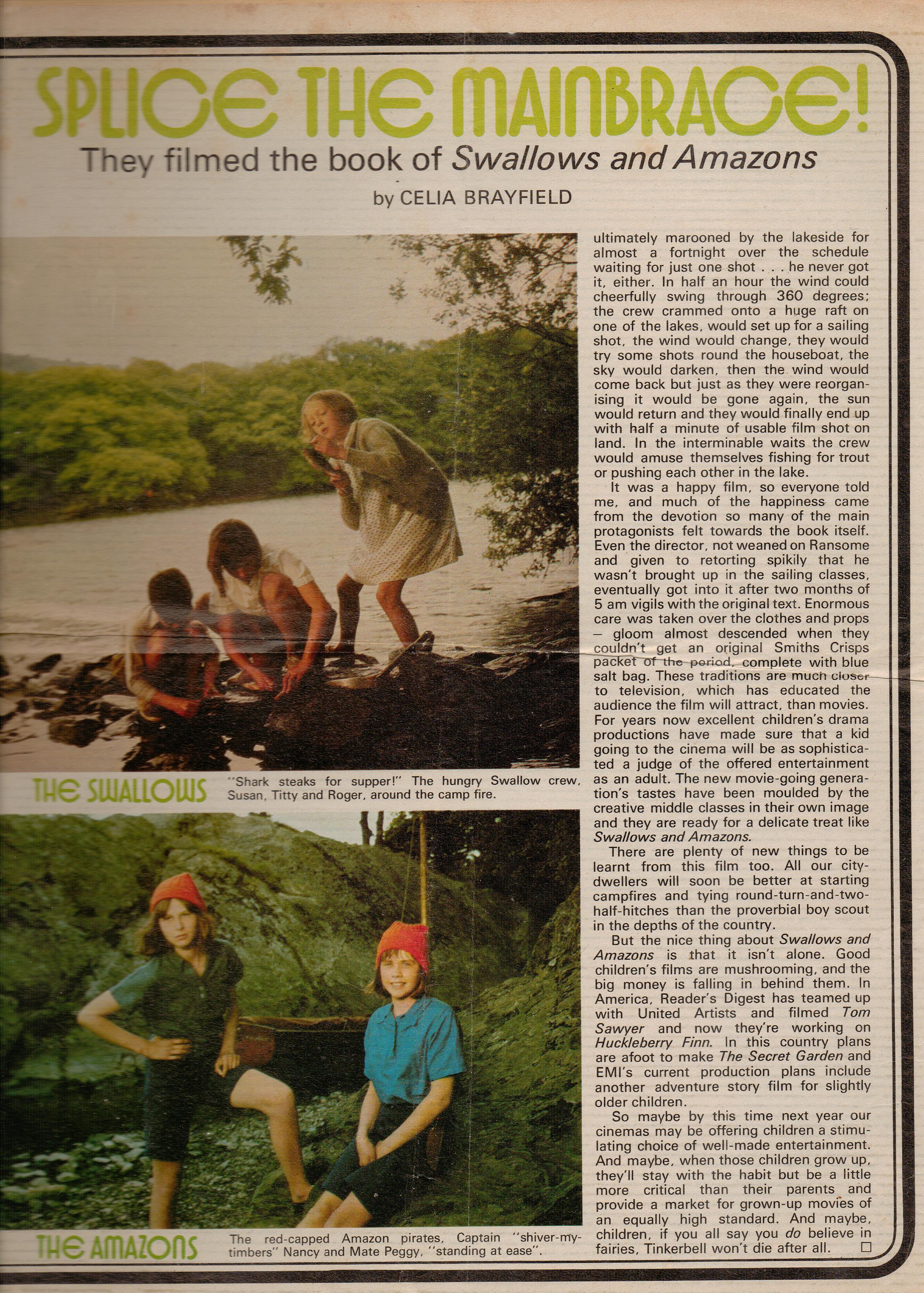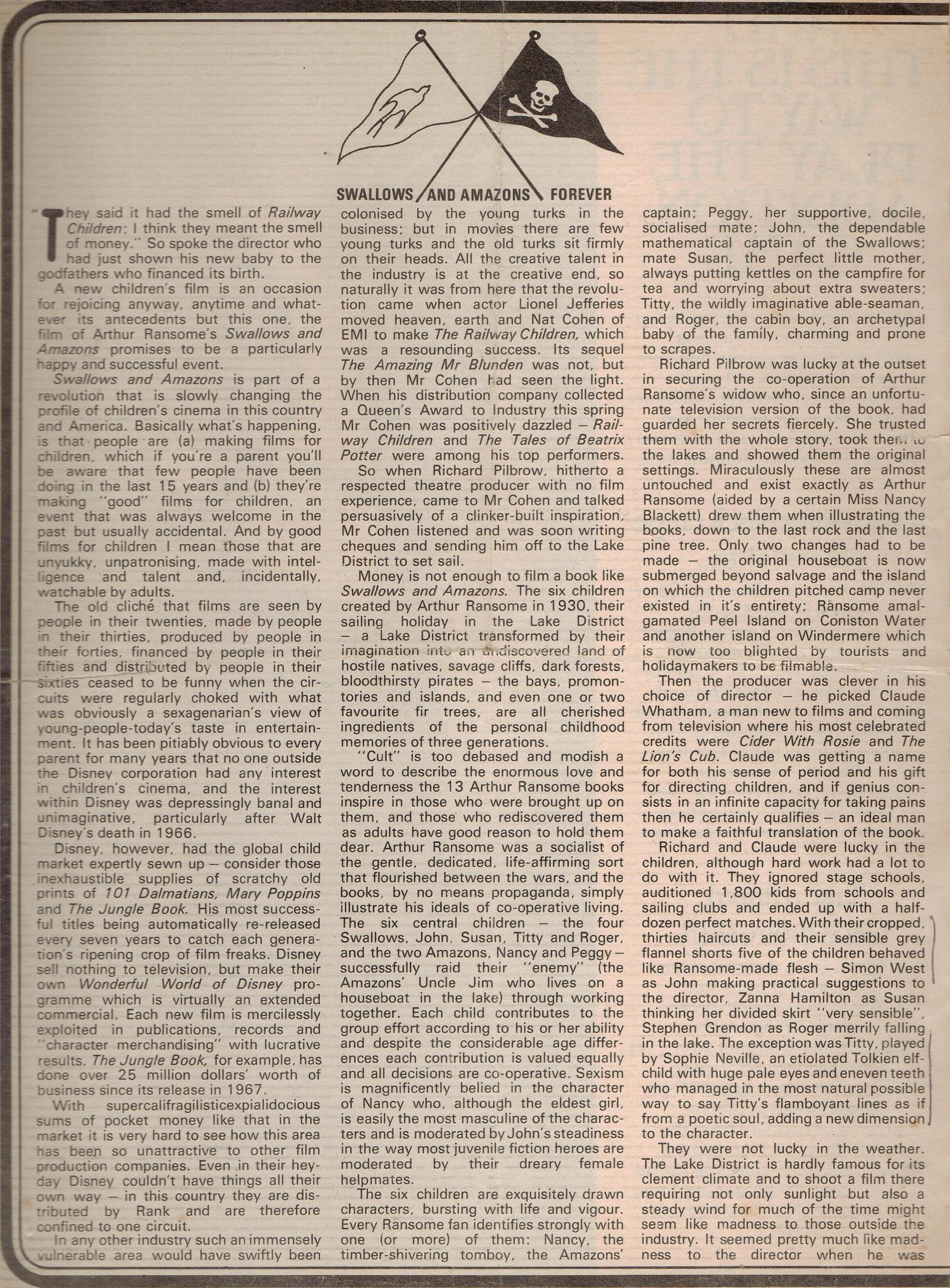A fascinating guidebook produced by Hayloft Publishing, written by David Banning with a foreword by Sophie Neville.
‘This is the finest comprehensive guide to the history of movies filmed in Cumbria and the Lake District, since the early twentieth century to the present day… it will take you on a journey through the filmic landscape of one of the world’s most beautiful places.’
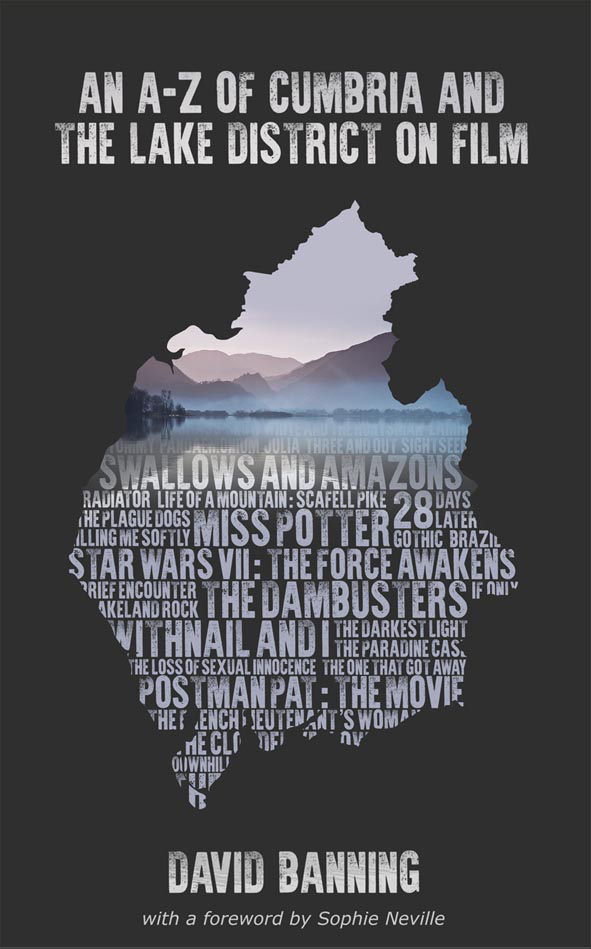
It is difficult to find copies now but the Daisy Roots Bookshop have one on Ebay here
‘You will be able to immerse yourself in the lush green world where Star Wars created an alien landscape or take a trip around Swallows and Amazons country, not to mention joining the ranks of Withnail and I pilgrims or sampling the nostalgic Brief Encounter tea rooms where a tiny piece of grit kick-started an enduring romance.’
To read more, please click here for Cumbria Today or click on this image for a review in the Cumberland & Westmorland Herald:

There is a feature in the Westmoreland Gazette here

For more information from Hayloft Publishing, and to buy this book, please click here
Terry Abraham, who made the film Life of a Mountain, writes: There are countless books covering aspects of the most beautiful corner of England but none which reveal little known facts regarding it as a location for filming. David thoroughly and interestingly brings to light the great number of films both large and small that have featured Lakeland on camera. Some less obvious than others but no less absorbing, you may well wish to seek out and visit where productions have captured the scenic delights of Lakeland. David’s book is an engaging and enlightening read and definitely one for the shelf alongside other works celebrating England’s finest landscape.
David Banning lists ten of the best films made in Cumbria. Please click on these links for the International Movie Database details and film trailers:
The French Lieutenant’s Woman, 1981
Star Wars Episode VII – The Force Awakens, 2015
You can see a shot of Derwent Water at 1.23 mins into the official film trailer for Star Wars after ‘This Christmas’ graphics, here:
Review of ‘An A-Z of Cumbria and the Lake District on Film by David Butters
I received this book as a gift from a friend. I live near the Lake District and visit it as often as I can; I now have new reasons for going!
As the title suggests, the book discusses, in alphabetical order, virtually every film that has been shot either partly or wholly in the general areas we now know as Cumbria and the Lake District. And what a fascinating collection of titles it encompasses! I knew that The Dambusters flew over Derwentwater, that Brief Encounter utlilised Carnforth Railway Station, and that Swallows and Amazons, the 1974 version, was filmed almost entirely around Windermere and Coniston lakes. But I had no idea that Snow White and the Huntsman featured a cave in Little Langdale, for instance; or that The French Lieutenant’s Woman made use of a large house overlooking Lake Windermere. The animated classic The Plague Dogs apparently took inspiration from the Lake District countryside; and the village of Greendale in the TV and cinema favourite Postman Pat is based on a village near Kendal.
A brief synopsis of each film accompanies a description of the localities involved, and also some background information and stories: I especially enjoyed the story behind the famous shower scene in She’ll be Wearing Pink Pyjamas! (You’ll have to buy the book!)
This is a fabulous book, a guide book as well as an enjoyable read, and well worth a 2nd Edition, please publishers! It has given me fresh impetus to explore the Lake District and Cumbria even further. Unreservedly recommended.
‘Swallows and Amazons'(1974) filmed on location in the Lake District in 1973

